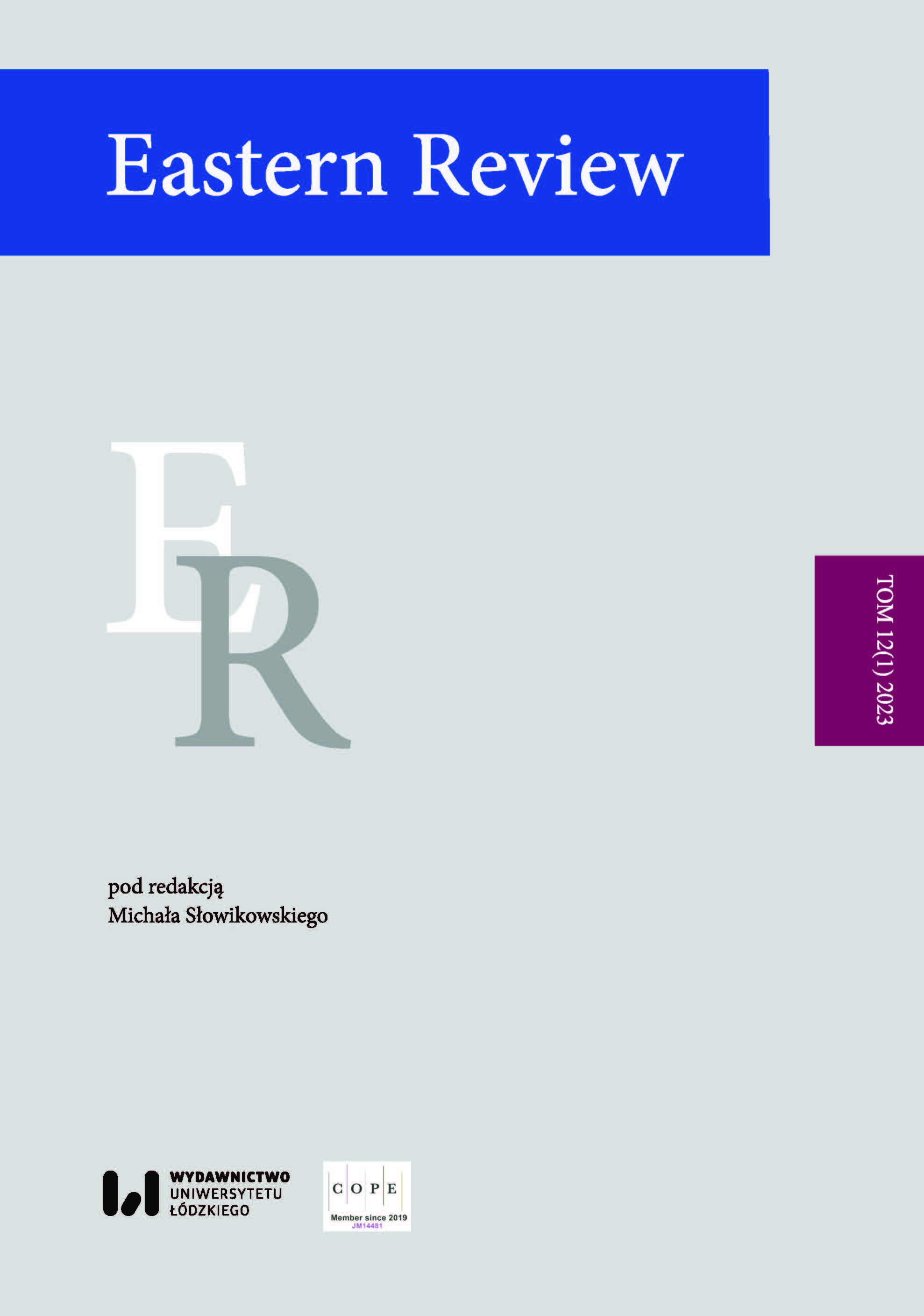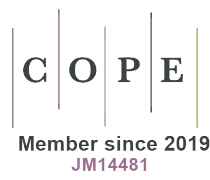The relationship between China and Cambodia as an example of international clientelism
DOI:
https://doi.org/10.18778/1427-9657.12.02Keywords:
China-Cambodia relations, Sino–Khmer relations, patron–client relations, international clientelismAbstract
Since the events of July 1997, when the Cambodian People’s Party staged a military coup and defeated the hitherto co-ruling FUNCINPEC party, relations with China have become an essential element for the new regime’s survival. Chinese support allowed the government to protect itself from human rights pressures, corruption and abuse of power, and gave it the political and economic space it needed at the time. Since then, Cambodia’s increasing and multidimensional dependence on the PRC has become apparent, raising questions about the actual nature of the relationship. This article aims to analyse bilateral relations between China and Cambodia through the lens of the theory of the patron–client arrangement in international relations. The author presents the course of cooperation between the two countries so far in the military and political fields by relating it to the theory of clientelism. He also points out the main motives behind the cooperation between the two states, arguing that the ‘security transfer’ characteristic of patron–clientelist relations takes place primarily with regard to the regime security (domestic policy) of the weaker partner rather than the strictly military dimension.
References
Axe, D. 2021. Yes, China Has More Warships Than The USA. That’s Because Chinese Ships Are Small. Forbes, 11.05., https://www.forbes.com/sites/davidaxe/2021/11/05/yes-china-has-more-warships-than-the-usa-thats-because-chinese-ships-are-small/?sh=25b2d7a5611d (dostęp 2.04.2024).
Google Scholar
Bradford, J.F. 2022. Chinese Military Basing in Cambodia: Why Be So Up in Arms? IDSS Paper 8, 16.02., https://www.rsis.edu.sg/wp-content/uploads/2022/02/IP22008.pdf (dostęp 2.04.2024).
Google Scholar
Cadell, C., Nakashima, E. 2022. China secretly building naval facility in Cambodia, Western officials say. The Washington Post, https://www.washingtonpost.com/national-security/2022/06/06/cambodia-china-navy-base-ream/ (dostęp 2.04.2024).
Google Scholar
Campbell, Ch. 2022. A Chinese Naval Base in Cambodia Signals a New Era of Region Competition in the Asia-Pacific. Time, 7.06., https://time.com/6185021/china-cambodia-ream-naval-base/ (dostęp 2.04.2024).
Google Scholar
Candra Wiranta Kusuma, S., Carollina, N. 2019. China-Cambodia Relationships: Phnom Penh as Beijing’s Permanent Client State. Journal of International Relations 3(2), s. 189–203. https://doi.org/10.33021/aegis.v3i2.774
Google Scholar
DOI: https://doi.org/10.33021/aegis.v3i2.774
Carney, Ch. 1989. International Patron-Client Relationships: A Conceptual Framework, Studies in Comparative International Development 24, s. 42–55. https://doi.org/10.1007/BF02687171
Google Scholar
DOI: https://doi.org/10.1007/BF02687171
Chen, S. 2019. The Development of Cambodia–China Relation and Its Transition Under the OBOR Initiative. The Chinese Economy 51(4), s. 370–382. https://doi.org/10.1080/10971475.2018.1457317
Google Scholar
DOI: https://doi.org/10.1080/10971475.2018.1457317
China donates 150 new vehicles, office equipment to Cambodia in preparation for upcoming ASEAN meetings. 2022. Xinhua, 9.01., https://english.news.cn/20220901/a75aaae6,b9e44d918e2b192cb2f7ae86/c.html?fbclid=IwAR07hd5k7vLI7oZp7wC1TNxXIByW-0rP020n2YdgK1lExJSYLSAKAcCtkvE (dostęp 2.04.2024).
Google Scholar
China pledges over $100 million military aid to Cambodia. 2018. Reuters, 19.06., https://www.reuters.com/article/us-cambodia-china-idUSKBN1JF0KQ?fbclid=IwAR3rM5du3o1-a7KBMIRYMLUryFS_1ObuaLbSIHrqFaqUX2nmC5EsyEmg7PE (dostęp 2.04.2024).
Google Scholar
Ciorciari, J. 2013. China and Cambodia: Patron and Client? International Policy Center Working Paper 121. https://doi.org/10.2139/ssrn.2280003
Google Scholar
DOI: https://doi.org/10.2139/ssrn.2280003
Ciorciari, J. 2014. A Chinese model for patron-client relations? The Sino-Cambodian partnership. International Relations of the Asia-Pacific 15(2), s. 245–278. https://doi.org/10.1093/irap/lcu021
Google Scholar
DOI: https://doi.org/10.1093/irap/lcu021
Egberink, van der Putten, F. 2011. ASEAN, China’s Rise ad Geopolitical Stability in Asia. Kopenhaga: Clingendael Institute.
Google Scholar
Gentile, Ch. 2023. Chinese Investment in Cambodia: The Dara Sakor Airfield. Tearline.mil. 22.05., https://www.tearline.mil/public_page/cambodia#overview (dostęp 2.04.2024).
Google Scholar
Graham, E. 2016. The Hague Tribunal’s South China Sea Ruling: Empty Provocation or Slow-Burning Influence? Council of Councils, 18.08., https://www.cfr.org/councilofcouncils/global-memos/hague-tribunals-south-china-sea-ruling-empty-provocation-or-slow-burning-influence (dostęp 2.04.2024).
Google Scholar
Hicken, A. 2011. Clientelism. The Annual Review of Political Science 14, s. 289–310. https://doi.org/10.1146/annurev.polisci.031908.220508
Google Scholar
DOI: https://doi.org/10.1146/annurev.polisci.031908.220508
Joint Cambodia-China ‘Golden Dragon’ Military Drills to Proceed, Despite Threat of Coronavirus. 2020. Radio Free Asia, 3.02, https://www.rfa.org/english/news/cambodia/drills-03022020170333.html (dostęp 2.04.2024).
Google Scholar
Joint Communiqué between the Royal Government of the Kingdom of Cambodia and the Government of the People’s Republic of China. 2022. Phnom Penh, 11.11., https://www.mfaic.gov.kh/posts/2022-11-11-Press-Release-Joint-Communiqu%C3%A9-between-the-Royal-Government-of-the-Kingdom-of-Cambodia-and-the-Government-of-the-P-14-01-51 (dostęp 2.04.2024).
Google Scholar
Kaufman, R. 1974. Patron-Client Concept and Macro-Politics: Prospects and Problems. Comparative Studies in Society and History 16(3), s. 284–308. https://doi.org/10.1017/S0010417500012457
Google Scholar
DOI: https://doi.org/10.1017/S0010417500012457
Konstytucja Królestwa Kambodży. 1993. Biblioteka Sejmowa, https://biblioteka.sejm.gov.pl/konstytucje-swiata-kambodza/ (dostęp 2.04.2024).
Google Scholar
Kosienkowski, M. 2019. The patron–client relationship between Russia and Transnistria. W: T. Hoch, V. Kopeček (red.). De Facto States in Eurasia, Abingdon: Routledge, s. 183–207. https://doi.org/10.4324/9780429244049-14
Google Scholar
DOI: https://doi.org/10.4324/9780429244049-14
Leng, T. 2019. Underlying Factors of Cambodia’s Bandwagoning with China’s Belt and Road Initiative. East Asia 36, s. 243–253. https://doi.org/10.1007/s12140-019-09316-8
Google Scholar
DOI: https://doi.org/10.1007/s12140-019-09316-8
Long, D. 2020. Cambodia, China and the Dara Sakor Problem. The Diplomat, 21.10., https://thediplomat.com/2020/10/cambodia-china-and-the-dara-sakor-problem/ (dostęp 2.04.2024).
Google Scholar
Lubold, G., Page, J., Taylor, R. 2019. Deal for Naval Outpost in Cambodia Furthers China’s Quest for Military Network. The Wall Street Journal, 22.07., https://www.wsj.com/articles/secret-deal-for-chinese-naval-outpost-in-cambodia-raises-u-s-fears-of-beijings-ambitions-11563732482 (dostęp 2.04.2024).
Google Scholar
Onishi, T. 2022. ‘Swallowed’ by China: Cambodia’s Ream base expansion raises alarm. Nikkei Asia, 28.08., https://asia.nikkei.com/Spotlight/Belt-and-Road/Swallowed-by-China-Cambodia-s-Ream-base-expansion-raises-alarm (dostęp 2.04.2024).
Google Scholar
Parameswaran, P. 2020. What Did the 2020 China-Cambodia Golden Dragon Military Exercise Actually Achieve? The Diplomat, 8.06., https://thediplomat.com/2020/04/what-did-the-2020-china-cambodia-golden-dragon-military-exercise-actually-achieve/ (dostęp 2.04.2024).
Google Scholar
Peou, S. 2019. Cambodia in 2018. Southeast Asian Affairs, s. 105–120. https://doi.org/10.1355/aa19-1h
Google Scholar
DOI: https://doi.org/10.1355/aa19-1h
Pheakdey, H. 2012. Cambodia–China Relations: A Positive-Sum Game? Journal of Current Southeast Asian Affairs 31(2), s. 57–85. https://doi.org/10.1177/186810341203100203
Google Scholar
DOI: https://doi.org/10.1177/186810341203100203
Po, S., Sims, K. 2021. The Myth of Non-interference: Chinese Foreign Policy in Cambodia. Asian Studies Review 46(1), s. 36–54. https://doi.org/10.1080/10357823.2021.1887813
Google Scholar
DOI: https://doi.org/10.1080/10357823.2021.1887813
Rim, S. 2022. Cambodia Has Little to Gain From Hosting a Chinese Military Presence.The Diplomat, 10.06., https://thediplomat.com/2022/06/cambodia-has-little-to-gain-from-hosting-a-chinese-military-presence/?fbclid=IwAR0ZWiOD1IMUEV0wCN-o7FDTLtKse3DaeVuw7HKs8r1vKfoEusvih46UzH8 (dostęp 2.04.2024).
Google Scholar
Rising, D., Cheang, S. 2022. China, Cambodia breaking ground on joint port project. The Diplomat, 8.06., https://thediplomat.com/2022/06/china-cambodia-breaking-ground-on-joint-port-project/ (dostęp 2.04.2024).
Google Scholar
Shoemaker, Ch., Spanier, J. 1984. Patron-Client State Relationships: Multilateral Crises in the Nuclear Age. New York: Praeger.
Google Scholar
Strangio, S. 2012. Hun Sen’s Cambodia. London: Yale University Press.
Google Scholar
Strangio, S. 2022. What the Cambodian Naval Base Brouhaha Overlooks, The Diplomat. 8.06., https://thediplomat.com/2022/06/what-the-cambodian-naval-base-brouhaha-overlooks/ (dostęp 2.04.2024).
Google Scholar
Tarkowski, J. 1984. Patroni i Klienci. Warszawa: Instytut Studiów Politycznych PAN.
Google Scholar
Zaman, A. 2015. Compliance and Defiance in Patron-Client State Relationships: A Case Study of Pakistan’s Relationship with the United States, 1947–2013, https://openresearch-repository.anu.edu.au/bitstream/1885/101232/1/Zaman%20Thesis%202015.pdf (dostęp 2.04.2024).
Google Scholar
Downloads
Published
Versions
- 2025-02-18 (2)
- 2025-02-18 (1)
How to Cite
Issue
Section
License
Copyright (c) 2023 Sebastian Tomasz Tarała

This work is licensed under a Creative Commons Attribution-NonCommercial-NoDerivatives 4.0 International License.










